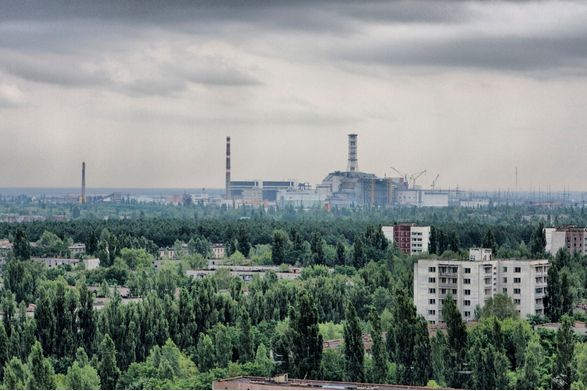In one of the final scenes of HBO’s miniseries Chernobyl, which aired early last month, nuclear scientist Valery Legasov (Jared Harris) exhibits uncharacteristic boldness when he refuses to toe the party line in his testimony before the Soviet sham trial being carried out to conceal the state’s culpability in the world’s worst nuclear disaster. Rather than placing blame for the accident solely on the men in charge of operations the night of the meltdown (as he had been instructed to do), Legasov testifies that the Chernobyl reactor had a purposefully concealed design flaw.
Following Legasov’s arrest for his insubordinate testimony, a senior KGB official reminds him that, in his former position as Communist Party secretary at the Kuchartov Institute, Legasov had intentionally limited the promotion of Jewish scientists to curry favor with Kremlin officials. “You’re one of us,” the KGB official charges, “You’re not brave; You’re not heroic.”
From beginning to end, the series illustrates how a lack of moral fortitude and a culture of fear were in large part responsible for the Chernobyl catastrophe. By the time of the less repressive Gorbachev regime, subservience, complicity, and timidity had become so ingrained among leaders and the public as a whole that, as Soviet-born American journalist Masha Gessen points out, “By and large, the Soviet people did what they were told without being threatened with guns or any punishment.”
Tragically, however, there are costs to be paid when a society—whether out of self-interest, ideology, complicity, or cowardice—rejects what is unquestionably true. “When the truth offends,” Legasov says, “we lie and lie until we can no longer remember it is even there. But it is still there. Every lie we tell incurs a debt to the truth. Sooner or later that debt is paid.”
In the case of Chernobyl, this debt was paid not only by the Soviet state, but also by the public at large and by men, who faced with the reality of lethal radiation exposure, nevertheless soldiered on to protect their families and fellow citizens.
In contrast to state authorities and apparatchiks who knowingly spewed disinformation and intentionally placed the public at heightened risk to protect their own power or reputation, the series highlights several instances of heroes defined by their bravery and their willingness to risk their own lives to protect the helpless.
Among these heroes are the firefighters who continue to advance to the burning surface of the nuclear reactor even as they witness fellow workers bleeding and vomiting from radiation poisoning, the divers who manually pump water out of the reactor facility, and the miners who agree to dig under the reactor to install a heat exchanger to avert further disaster. Reflecting on his and his colleagues’ willingness to engage in work that they were fully aware could lead to a horrendous death, Chernobyl miner Vladimir Naumov recounted: “Who else but us? Me and my fellow workers were brought up that way. Not that we went there to die, we went there to save lives.”
The events leading up to and following the Chernobyl disaster provide a useful reminder that moral fortitude, assertiveness, and courage in the face of intimidation, pain, and death are a social good that should be honed and encouraged. In an era in which traditional masculinity is frequently denounced as toxic and in which assertiveness and strength are discounted as character flaws that should be curbed rather than properly cultivated, we would do well to reflect on the fact that civilization depends on men who have the fortitude to fight for truth and to sacrifice themselves on our behalf.


